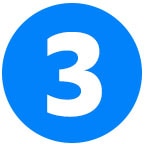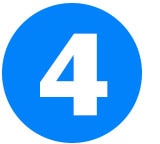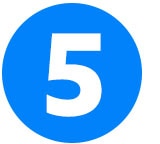Black History is American History, and the same goes for comic book history. Though the legacy of Black DC heroes may have started in fits and starts throughout the 20th century, by the turn of the millennium, the DC Universe had come to reflect DC’s diverse fanbase to a much greater extent. Two of DC’s most popular animated shows—Teen Titans and Justice League Unlimited—helped to establish a diverse cadre of crimefighters for all new audiences. This resulted in new fans seeking out stories to pursue, wanting further depths of characterization and representation in DC’s shared universe comics.
If you’re one of those newer fans or a longtime fan looking to broaden your comic book collection a little bit, then this House of List-ery is for you. The following are five essential DC comics starring Black heroes.


“Beware My Power!” – Green Lantern #87, 1971
A pivotal part of DC’s Black history, this classic comic book’s recently been given a terrific spotlight by Jules Chin Greene. I won’t parrot much of what Jules has already laid down, but as a Black DC fan and a fan of John Stewart, it’s almost impossible not to recommend this momentous origin story to anyone who may be unfamiliar.
It's best to keep the context of this story in mind. Architect John Stewart is chosen by the Guardians of the Universe to be Hal Jordan’s successor should he be unable to perform his duties as Earth’s Green Lantern after witnessing John stand up to some bullying policemen. Hal is less than convinced but complies, training John as his partner for the day.
What does John first do after gaining the almighty abilities of the power ring? He humiliates and thwarts a murderous plot by a racist politician. While it would be a couple of years before John would be a consistent part of the DCU, this initial outing proved his heroism in spades by allowing him to use his wits and intelligence to route out an everyday evil that white heroes like Hal Jordan were unconditioned to perceive.


“Rest In Peace” – Hardware #8, 1993
On the surface, Hardware could be summarized as a story of an inventor-turned-superhero who sets his high-tech arsenal on the criminal who employs him during the daytime. But look deeper and you’ll find a richer story of a man spiritually adrift with hate and seeking redemption.
The series begins with Curtis Metcalf becoming the armor-tech crimefighter known as Hardware, who sets his sights on industrialist/crime boss Edwin Alva’s operations. His offensives prove effective, but Curtis takes no prisoners, killing whomever Alva sets on him. Despite the moral outrage of his once and future girlfriend Barraki Young, Curtis at first shows no signs of remorse or slowing down. But after encountering a deranged vigilante who lost his sanity in pursuit of his mission, Curtis is haunted by the similarities between him and this onetime justice seeker.
Hardware #8 provides its main character with a lesson on how one can lose themselves in their pursuit of vengeance. Revenge had become a shell around Curtis Metcalf, which he mistook for his Hardware identity. By the end of issue #8, a leaner, stronger man emerges from that shell, devoting himself to justice.


“Fire” – Steel #45, 1997
While on a date with his girlfriend Dr. Amanda Quick, John Henry Irons is pulled over by two white policemen. They assault the couple until they find John’s Steel armor in the car and leave, taking Steel’s boots with them. In Steel #45, Amanda demands that John confront the cops at their own precinct, but upon arriving is arrested for their murder (unknown to everyone at the time, the cops were killed by Steel’s criminal brother Crash in revenge for his brother’s beating). Despite John’s word that he’d been out of town at the time of the murders, the D.A. goes through a showy investigation to satisfy the public that a Black hero may have gone rogue.
At the end of the issue, a detective stops by John’s apartment to clear him of all charges. He also returns his boots—in pieces. After several issues of bottling his emotions in the face of indignity and injustice, John explodes in righteous fury, destroying everything in sight of his apartment.
This gut-punch of a story, which has only become more timely and relevant since its release, highlights corrupt policing and racialized violence, and how it affects superheroes of color, no matter their profession or dedication.

“The Moment of Decision” – Icon #7, 1993
The story of Icon is really the story of his teenage sidekick, Rocket. Fifteen-year-old Raquel Ervin was inspired by the sight of a Black man flying and approached him with the idea to lift up their community as superheroes. After some initial success, Raquel is eager to continue, but Icon informs her that she’ll have to sit out for several weeks, letting her know that she’s pregnant.
The groundbreaking Icon #7 finds Raquel seeking advice from several people to help her decide on what to do about the pregnancy. Feeling unsupported by her boyfriend Noble, Raquel talks with her mother, grandmother and the medical professionals at a nearby clinic. No one makes her feel better about her options. When speaking with Icon, she’s told of a time when he and his late wife terminated their pregnancy due to health concerns. Raquel remains furious at her situation but decides to go through with the pregnancy. Months later, she gives birth to her son Amistad, whom she immediately loves.
In serving as the series’ point-of-view character, Rocket managed to push the mid-‘90s mainstream comic book industry into tackling a serious, real world issue with care and consideration, showing even aspirational characters have to wrestle with unexpected life challenges that don’t always offer clear answers.


Vixen: Return of the Lion, 2008
In Vixen: Return of the Lion, Mari McCabe returns to her birthplace of Zambesi in Africa, searching for the man who killed her mother.
As a supermodel and superhero in America as well as a member of the Justice League, Mari wears many hats. When she returns her hometown, the sheer differences in their way of life ignites an identity crisis in the young hero, causing her to lose self-confidence in her abilities before she’s rebirthed into a stronger, more self-assured and overwhelmingly capable hero.
This story approaches issues of identity that are not embodied by many of the white heroes in the DC canon. Even Superman never experienced a cultural shift in his move from Krypton to Kansas. Mari’s journey of selfhood is unique among superheroes and even heroes of color when it comes to separate identities embodied between different countries. Return of the Lion is the definitive Vixen tale, showcasing Mari’s strengths and nuances, and underlining how she’s one of DC’s most exciting heroes.
Donovan Morgan Grant writes about comics, graphic novels and superhero history for DC.com. Follow him on Twitter at @donoDMG1.
NOTE: The views and opinions expressed in this feature are solely those of Donovan Morgan Grant and do not necessarily reflect those of DC or Warner Bros. Discovery, nor should they be read as confirmation or denial of future DC plans.















